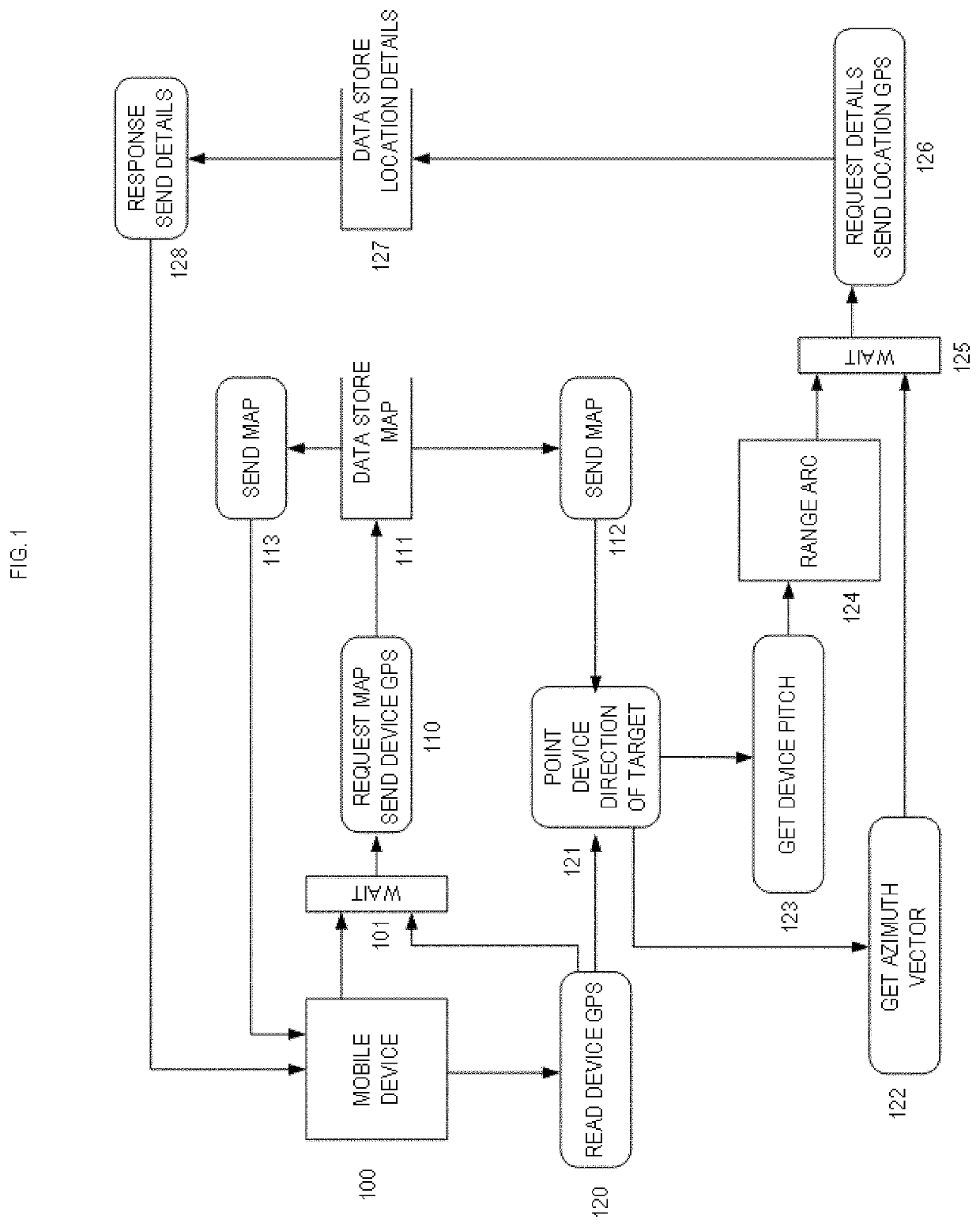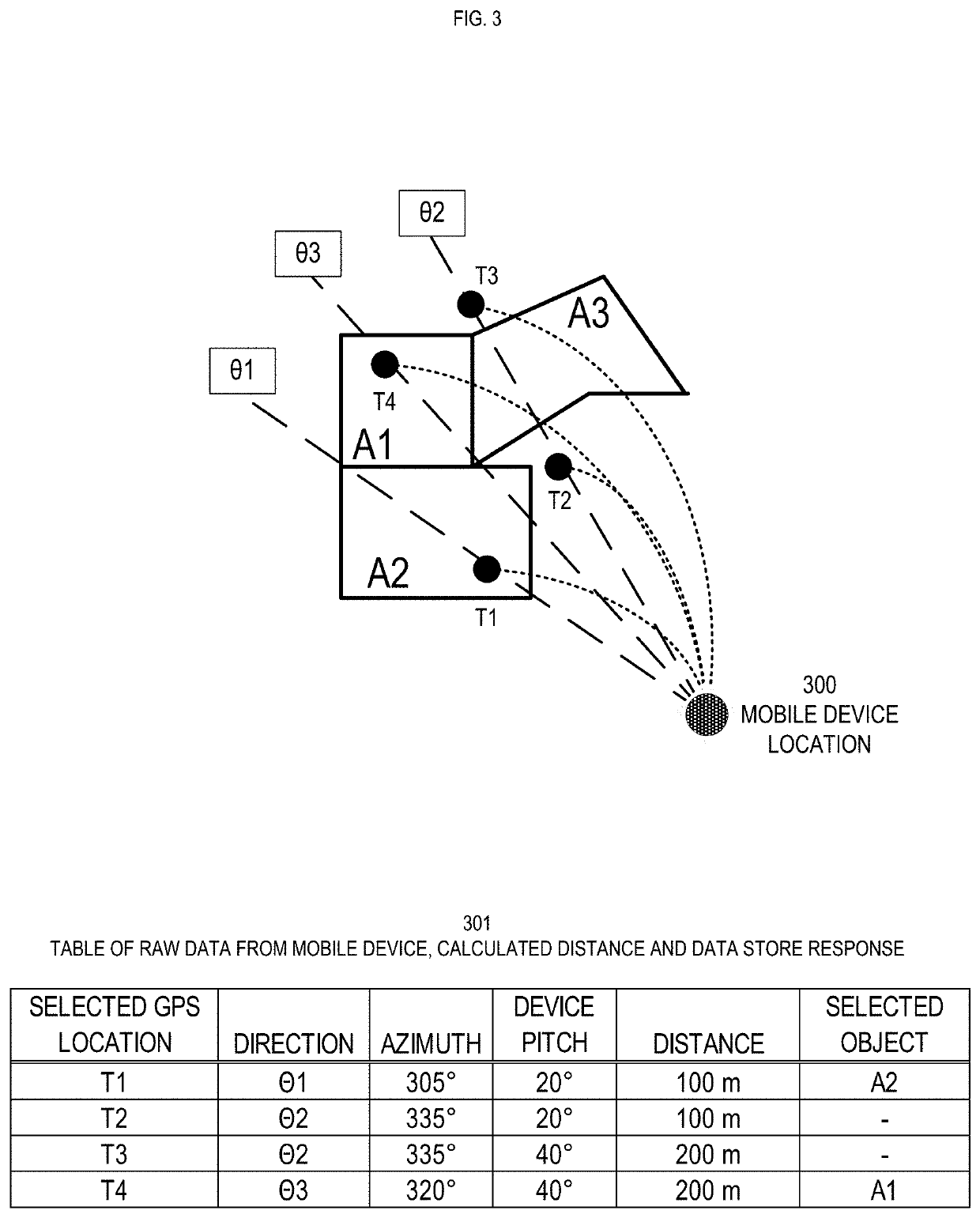Software for Distance and Object Identification Deployed on Mobile Devices
a software and distance technology, applied in the field of software for distance and object identification deployed on mobile devices, can solve the problems of limited line of sight and finite range of options, limited implementations, and difficult repeating and verifying measurements, etc., and achieve the effect of accurately selecting objects
- Summary
- Abstract
- Description
- Claims
- Application Information
AI Technical Summary
Benefits of technology
Problems solved by technology
Method used
Image
Examples
Embodiment Construction
[0091]FIG. 1 is a block diagram illustrating a system overview showing an exemplary flow of the logical function implemented in the communication between the mobile device and the data store. It starts with the mobile device 100 and reads the GPS location of the device 120. With a GPS location 101, a request is made for a map 110 based on said GPS location. The data store queries for a map 111 centered on the GPS location. The data store responds with a map 113. The map is displayed on the mobile device 100. The map. The map 113 is used on the mobile device to for the operator to identify what target is selected. FIG. 112 and FIG. 113 are the same map. FIG. 112 is a virtual representation of the map and FIG. 113 is a physical manifestation. The operator points the mobile device 121 in the direction of the target, using the map and or visual observation. The direction of the mobile device 122 is used to determine the azimuth. An azimuth vector is created, from the GPS location of the...
PUM
 Login to View More
Login to View More Abstract
Description
Claims
Application Information
 Login to View More
Login to View More - R&D
- Intellectual Property
- Life Sciences
- Materials
- Tech Scout
- Unparalleled Data Quality
- Higher Quality Content
- 60% Fewer Hallucinations
Browse by: Latest US Patents, China's latest patents, Technical Efficacy Thesaurus, Application Domain, Technology Topic, Popular Technical Reports.
© 2025 PatSnap. All rights reserved.Legal|Privacy policy|Modern Slavery Act Transparency Statement|Sitemap|About US| Contact US: help@patsnap.com



